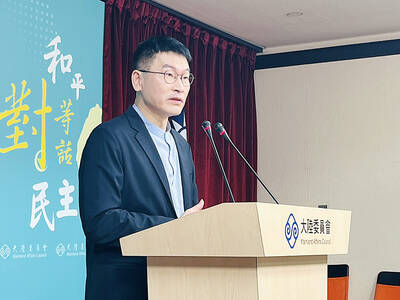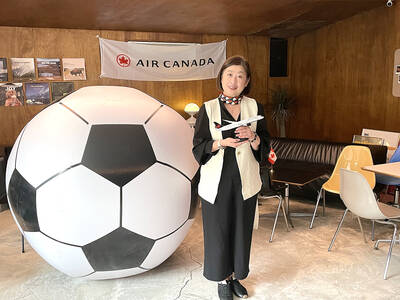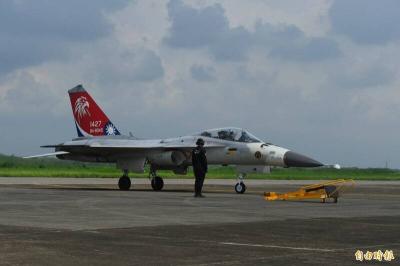Revisions have been made to the latest version of guidelines for diagnosis and treatment of HIV/AIDS, with the Centers for Disease Control (CDC) recommending earlier treatment.
People with HIV-negative sexual partners are advised to begin treatment regardless of their cluster of differentiation 4 (CD4) count.
The fourth version of the Ministry of Health and Welfare guidelines recommends an earlier starting point for HIV treatment for HIV-positive people at a CD4 T-cell count of 500 or less, or 500 T-cells or less per cubic millimeter of blood, according to the Taiwan AIDS Society.
Studies have shown that starting the antiretroviral therapy at a CD4 count of between 350 and 500 reduces the incidence of opportunistic infections and lowers the death rate in HIV-positive patients, the society said, adding that the WHO raised the treatment bar in June from a CD4 count of 350 to 500, and 90 percent of the countries in the world have since adopted the new guideline.
Another revision to the guidelines recommends that HIV treatment be provided to HIV-positive people who might transmit the virus to their sexual partners, regardless of CD4 count.
According to the result of a clinical trial — known as HPTN 052 — where one partner is HIV-positive and the other is not (serodiscordant), the antiretroviral treatment on HIV-positive people can reduce the risk of transmitting the virus to their HIV-negative sexual partners by 96 percent.
The US Department of Health and Human Services guidelines last year recommended all serodiscordant couples to start treatment regardless of CD4 T-cell counts, followed by the WHO this year.
Centers for Disease Control Director-General Chang Feng-yee (張峰義) said that the cost of HIV treatment, which has exceeded NT$2.6 billion (US$87 million) a year in recent years, is shouldered by the CDC.
Following the guidelines recommended by the WHO can lower the risk of opportunistic infections and prolong the lives of HIV-positive patients, but the price is an upsurge in the cost of medicine, Chang said.
Chang added that preliminary thoughts on how to contain the cost is to have those who often stop the treatment to discontinue taking the drugs, for now, to avoid potential drug-resistance.

LOW RISK: Most nations do not extradite people accused of political crimes, and the UN says extradition can only happen if the act is a crime in both countries, an official said China yesterday issued wanted notices for two Taiwanese influencers, accusing them of committing “separatist acts” by criticizing Beijing, amid broadening concerns over China’s state-directed transnational repression. The Quanzhou Public Security Bureau in a notice posted online said police are offering a reward of up to 25,000 yuan (US$3,523) for information that could contribute to the investigation or apprehension of pro-Taiwanese independence YouTuber Wen Tzu-yu (溫子渝),who is known as Pa Chiung (八炯) online, and rapper Chen Po-yuan (陳柏源). Wen and Chen are suspected of spreading content that supported secession from China, slandered Chinese policies that benefit Taiwanese and discrimination against Chinese spouses of

ALIGNED THINKING: Taiwan and Japan have a mutual interest in trade, culture and engineering, and can work together for stability, Cho Jung-tai said Taiwan and Japan are two like-minded countries willing to work together to form a “safety barrier” in the Indo-Pacific region, Premier Cho Jung-tai (卓榮泰) yesterday said at the opening ceremony of the 35th Taiwan-Japan Modern Engineering and Technology Symposium in Taipei. Taiwan and Japan are close geographically and closer emotionally, he added. Citing the overflowing of a barrier lake in the Mataian River (馬太鞍溪) in September, Cho said the submersible water level sensors given by Japan during the disaster helped Taiwan monitor the lake’s water levels more accurately. Japan also provided a lot of vaccines early in the outbreak of the COVID-19 pandemic,

PROMOTION: Travelers who want a free stopover must book their flights with designated travel agents, such as Lion Travel, Holiday Tours, Cola Tour and Life Tours Air Canada yesterday said it is offering Taiwanese travelers who are headed to North America free stopovers if they transit though airports in Japan and South Korea. The promotion was launched in response to a potential rise in demand for flights to North America in June and July next year, when the US, Canada and Mexico are scheduled to jointly host the FIFA World Cup, Air Canada said. Air Canada offers services to 13 of the 16 host cities of the tournament’s soccer games, including Toronto and Vancouver; Mexico City, Guadalajara and Monterrey in Mexico; Atlanta, Georgia; Boston; Dallas; Houston;

The US approved the possible sale to Taiwan of fighter jet spare and repair parts for US$330 million, the Pentagon said late yesterday, marking the first such potential transaction since US President Donald Trump took office in January. "The proposed sale will improve the recipient's capability to meet current and future threats by maintaining the operational readiness of the recipient's fleet of F-16, C-130," and other aircraft, the Pentagon said in a statement. Trump previously said that Chinese President Xi Jinping (習近平) has told him he would not invade Taiwan while the Republican leader is in office. The announcement of the possible arms